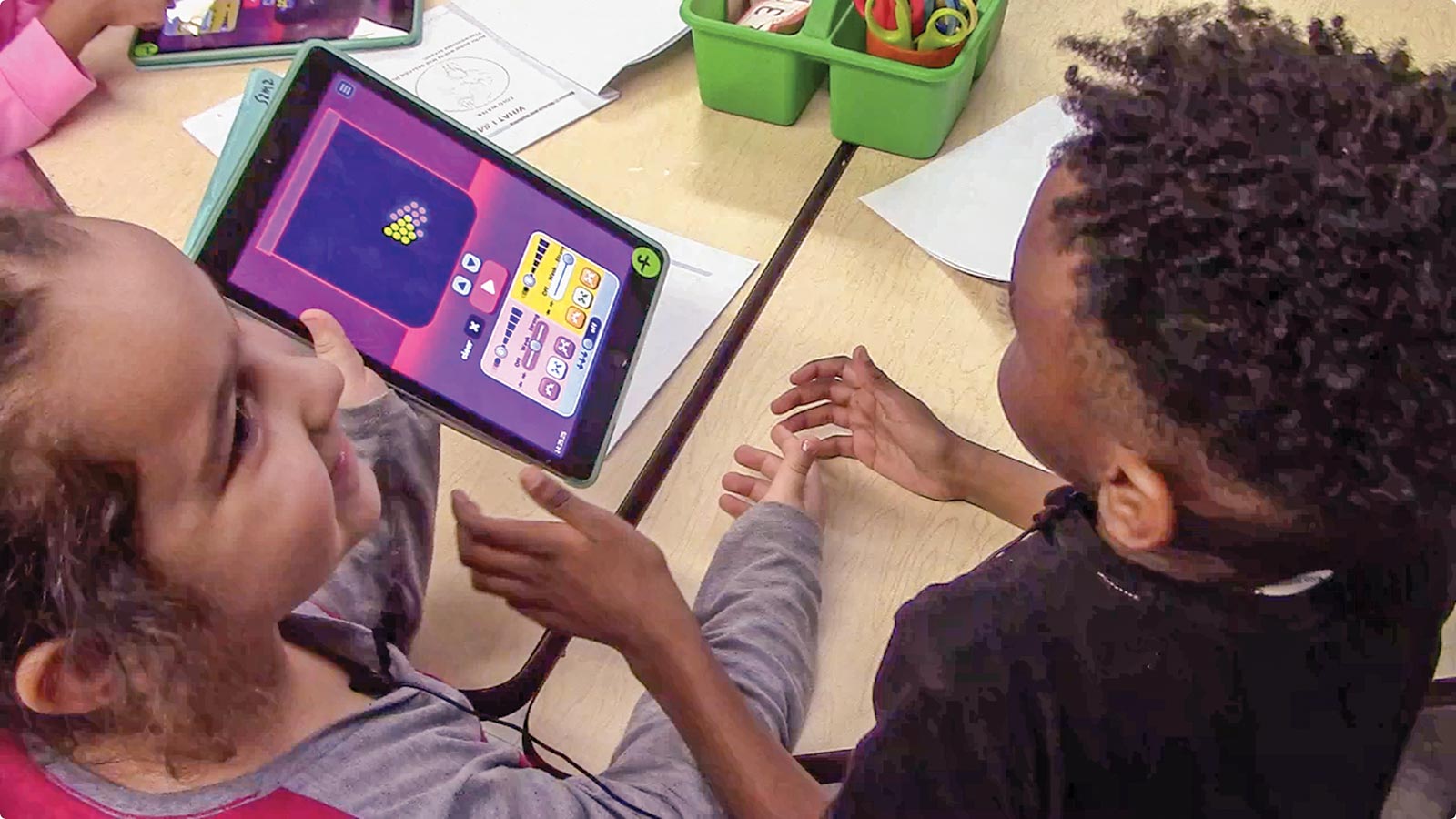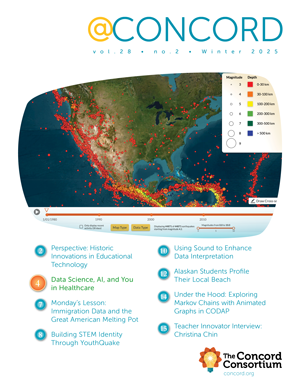Engaging in Computational Thinking Through System Modeling, Teaching Science with Data, Automating Detection of Engineering Design Practices, and more in Fall @Concord
Perspective: The History and Future of Data Fluency
The Concord Consortium marks its 25th anniversary this year. That's an admirable length by any measure. In technology innovation years, it's practically eons. At our founding, in August 1994, the World Wide Web contained only a few thousand sites and the concept of ubiquitous powerful computers was barely more than a thought experiment. Although change is the only true constant in an organization founded on innovation, one of the most consistent themes running through our quarter century history is helping learners become fluent with data.
Engaging in Computational Thinking Through System Modeling
Most critical issues facing us today can be modeled as a complex system of interrelated components, involving chains of relationships and feedback between parts of the system. A common approach for understanding and solving problems such as these involves using a computer to simulate a model of the system. Developing and using system models requires computational thinking skills not only by the software engineers writing the code, but also by the entire team working to understand the system. A computational thinking perspective is necessary for everyone to contribute to decomposing the problem such that it can be modeled, tested, debugged, and used to understand the system under study. Indeed, the Next Generation Science Standards (NGSS) emphasize the importance of computational thinking and modeling using the lens of systems and system modeling.
Monday’s Lesson: Zoom In! Teaching Science with Data
Most critical issues facing us today can be modeled as a complex system of interrelated components, involving chains of relationships and feedback between parts of the system. A common approach for understanding and solving problems such as these involves using a computer to simulate a model of the system. Developing and using system models requires computational thinking skills not only by the software engineers writing the code, but also by the entire team working to understand the system.
Automating Detection of Engineering Design Practices in Energy3D: Integrating Human and Machine Intelligence
With the expanded adoption of project-based learning and the Next Generation Science Standards (NGSS), there is a growing emphasis on students engaging in authentic science and engineering practices that mirror professional practices. Incorporating both disciplinary content knowledge and strategies for using that content knowledge, practices reflect dynamic, flexible, and potentially highly transferable skills. Helping students engage in practices is important because they extend what students know to what students can do, enable them to wrestle with complex, open-ended challenges, and are associated with gains in both confidence and students’ sense of self as a scientist or engineer.
Young Children Explore the Particle World with Apps
Children learn by constructing knowledge. With each new experience, they test their naive beliefs (or in the research literature, their "theories in action") against the evidence. "What do I see/hear/feel? What do I know already? How does this relate to what I think I know?" They can then explicitly or implicitly affirm beliefs or reformulate theories. The Concord Consortium creates tools for children of all ages that provide firsthand evidence to test their developing theories and grow their knowledge about the world around them, including the hidden world of atoms and molecules that we can't see or touch.
Investigating Smart Museum Exhibits
Students spend more waking hours outside of school than in school. It’s no wonder that learning takes place not just in classrooms, but in different informal learning settings at home, around town, and in other community spaces. Technologies are also all around us. Our Learning Everywhere initiative aims to explore ways to bridge, extend, and connect school learning to other learning experiences across settings, using the best features of technology.
Under the Hood: Sharing the Sky in an AR Planetarium
Traditional ways of learning about the stars and motions of the sun, moon, and planets employ elements common to augmented reality: collaboration and embodiment. The CEASAR project (Connections of Earth and Sky Using Augmented Reality) is researching methods of collaborative problem-solving using augmented reality (AR).
Innovator Interview: Ethan McElroy
As a teenager in the ’90s, Ethan had access to the nascent World Wide Web through a local ISP and Netscape Navigator. His curiosity led him to learn HTML by copying web pages as a template for creating his own. An English and fine arts major at the University of New Hampshire, he tried formatting poetry on the Web. One early puzzle was figuring out how to right align text.
News at Concord Consortium
The latest news from the Concord Consortium in fall 2019: teacher ambassadors, watershed awareness and STEM careers, educating designers for generative engineering, and more.







